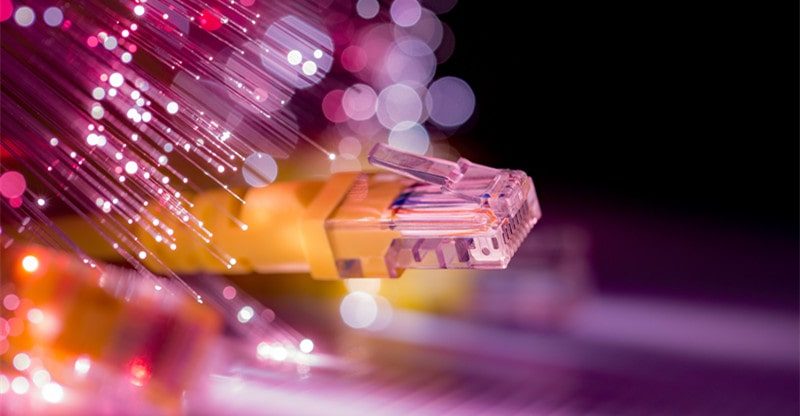Optical Cables Applied in 5G Network
5G network construction is inseparable from the construction of base stations, and the construction of base stations has complex shapes and consumes a lot of resources for pipes and optical cable cores. In different scenarios, the characteristics of the network are different, so different requirements are put forward for the performance of optical fiber transmission.
Fiber optic cables need to be more diversified, such as high bending resistance, miniaturization and high density.
Covering new infrastructure industries such as 5G, artificial intelligence, industrial Internet, big data centers, new energy vehicles, UHV, intercity high-speed railways and intercity rail transit, it has a wide range of industrial chains, strong synergy effects, and large penetration effects, etc. Features, 5G, as the top of the new infrastructure, has a broad space for development.
Considering that 5G requires large-scale base station deployment in a complex wiring environment, reasonably plan the structure and capacity of the local optical cable network, reasonably select optical fiber cables, and moderately advance the construction of access backbone optical cables. While carrying the demand, rationally optimize the construction plan and reduce costs.
Typical Application Scenarios of 5G Networks
The 5G network mainly realizes the following three typical application scenarios, enhanced mobile broadband (eMMB), ultra-reliable and low-latency communication (uRLLc), and massive machine communication (mMTC). Typical nine major projects can be realized in the three major scenarios.
5G Access Cable Network Structure
The access optical cable can be divided into the three-layer structures of backbone, distribution and introduction; the backbone optical cable is mainly in the ring structure, and the distribution and introduction optical cable is mainly in the chain and tree structure.
The CU/DU joint deployment mode and the corresponding 5G fronthaul mode will have a decisive impact on the construction plan of the access optical cable network in each layer structure.
5G Fronthaul Optical Cable Networking
The metro access layer is divided into two stages: 5G fronthaul and 5G midhaul/backhaul. Fronthaul has two scenarios: D-RAN (distributed radio access network) and C-RAN (centralized radio access network). C-RAN can be subdivided into two deployment modes: C-RAN small concentration and C-RAN large concentration.
In the mid-to-late stage of 5G construction, CU and DU will be separated, and CU will be deployed centrally at the edge of DC virtualization. 5G RAN will gradually evolve into a three-level architecture of CU, DU, and AAU. The corresponding bearer network architecture will be decomposed into fronthaul, mid-haul, and backhaul.
The carrying range and carrying mode of the fronthaul remain unchanged; the medium transmission is responsible for the service scheduling of the integrated service access point/DU concentration point-the edge DC node, which mainly corresponds to the access layer of the local transmission system.
The backhaul is responsible for the edge DC node-the core node and the edge The business scheduling between DC nodes mainly corresponds to the core convergence layer of the local transmission system.
5G Mid/Backhaul
The core functions of the 5G mid-haul/backhaul bearer network solution must meet the bearer requirements of multi-level bearer networks, flexible connection scheduling, hierarchical network slicing, 4G/5G hybrid bearer, and low-cost high-speed networking. Generally, no more than 40km, the networking method is mainly a ring network, and a small amount is a chain or star link.
5G Network Construction Requirements for Optical Cables
As the basic physical layer, the optical cable should not only meet the current application requirements but also be compatible with future development needs. The requirements of 5G network construction for optical cables not only need to consider the needs of the network structure but more importantly, the laying environment of optical cables.
Therefore, the requirements for optical cables are to adapt to complex application environments, requiring high fiber density, insensitivity to bending, and fast laying, fast installation, fast maintenance, multi-scenario applications, etc., to achieve efficient and flexible deployment and activation.
1. Data center optical cable
The internal transmission rate of the data center has begun to evolve from 1G/10G to 25G/100G and 200G/400G. High-density wiring in the data center requires optical cables to have good bending resistance; large-core high-density optical cables are suitable choices.
2. Trunk optical cable
The transmission distance of the trunk line is relatively long, generally reaching dozens or even hundreds of kilometers, so the requirements for the trunk line on optical cables are obvious. The advantage of using G.654. The relay station set and has an anti-micro blend performance.
3. Aggregation layer, core layer, access backbone optical cable
The backhaul of 5G covers two parts: the aggregation layer and the core layer. The pipeline resources of the aggregation layer are relatively limited, especially the pipeline resources of the main roads in the city are relatively tight. The bandwidth requirements of the aggregation layer will gradually increase with the increase of 5G applications.
At this time, under the limited pipeline resources, it is necessary to consider smaller small-diameter optical cables and air-blown micro cables to increase the density of optical fibers and the space of pipelines. utilization rate.



